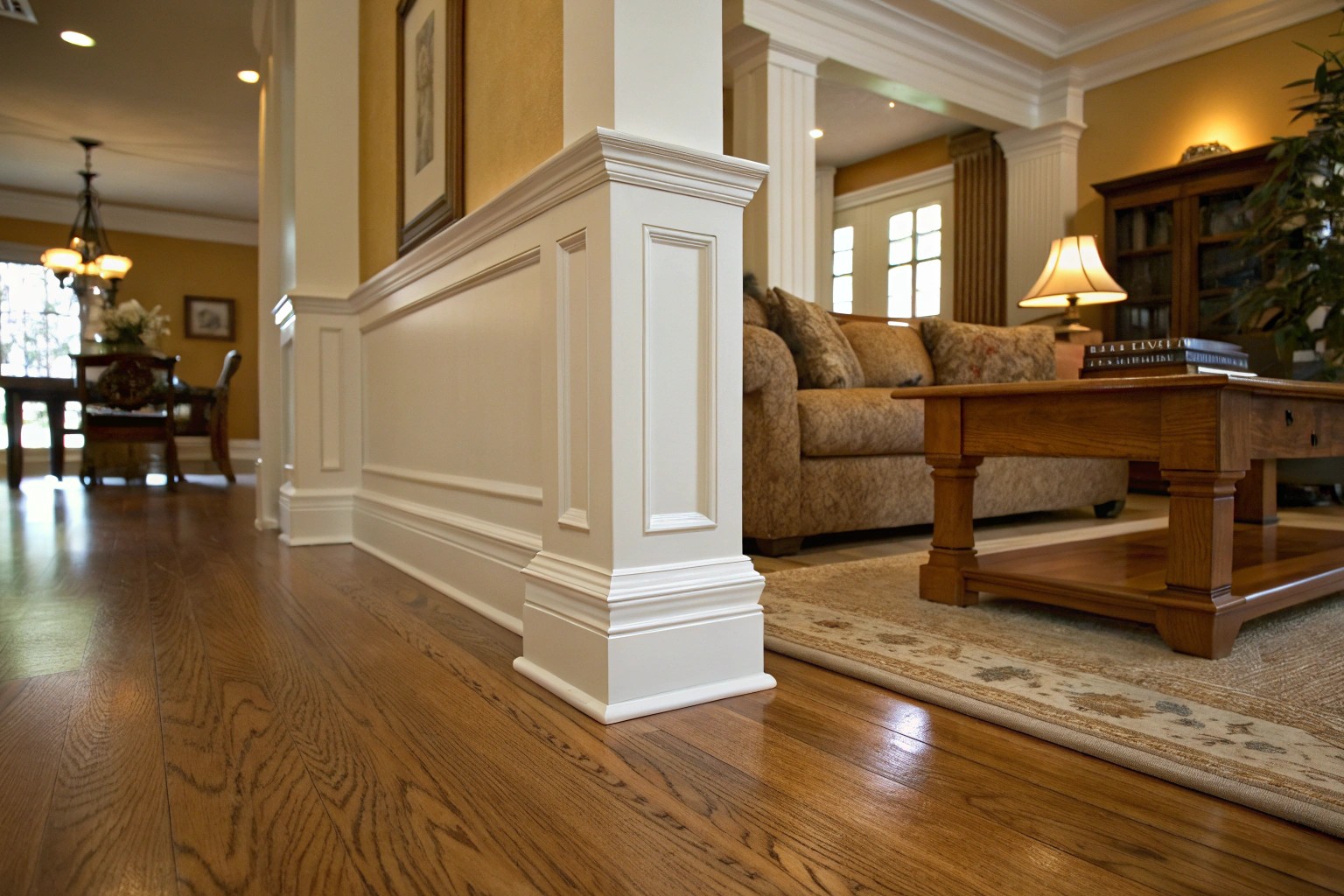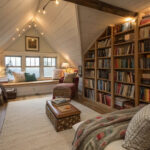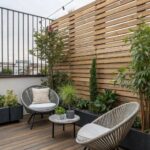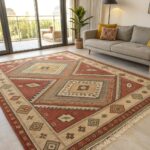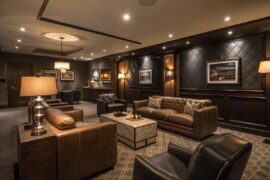Baseboards may be the unsung heroes of interior design, but these seemingly modest elements play a crucial role in defining a space’s character. They’re not merely functional trim pieces that protect walls from scuffs and cover unsightly gaps—they’re the foundational design elements that anchor your entire room. When done right, baseboards create visual harmony; when overlooked, they can subtly undermine even the most carefully designed spaces.
The Dual Purpose of Baseboards
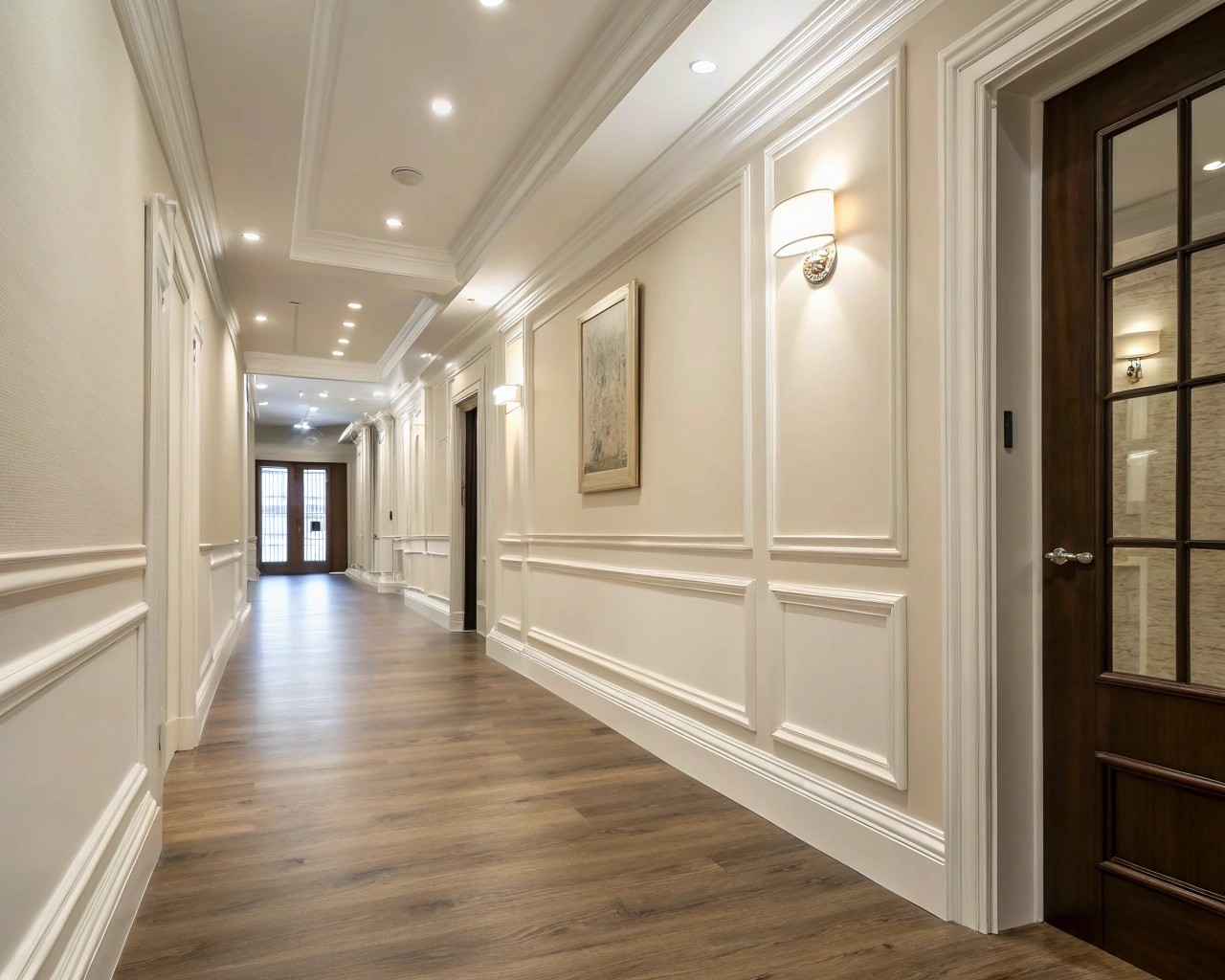
Baseboards serve both practical and aesthetic functions in our homes. Understanding these roles helps elevate them from afterthought to design essential.
Functional Benefits
- Create a finished transition between floors and walls
- Protect walls from damage from vacuums, mops, and foot traffic
- Cover construction gaps between flooring and wall surfaces
- Provide a barrier against moisture and debris
Aesthetic Contributions
- Define the architectural style of a space
- Create visual weight and grounding
- Establish proportion and scale
- Enhance overall design cohesion
“I’ve walked into countless beautifully decorated homes where something felt subtly ‘off’ about the space,” shares one client. “It wasn’t until we replaced the builder-grade baseboards with something proportionate to the room that everything suddenly felt right. The transformation was remarkable considering how simple the change was.”
The Language of Baseboard Styles
Baseboards come in various profiles and styles, each speaking a different design language. Choosing the right style creates harmony with your home’s architecture.
Modern and Minimalist Designs
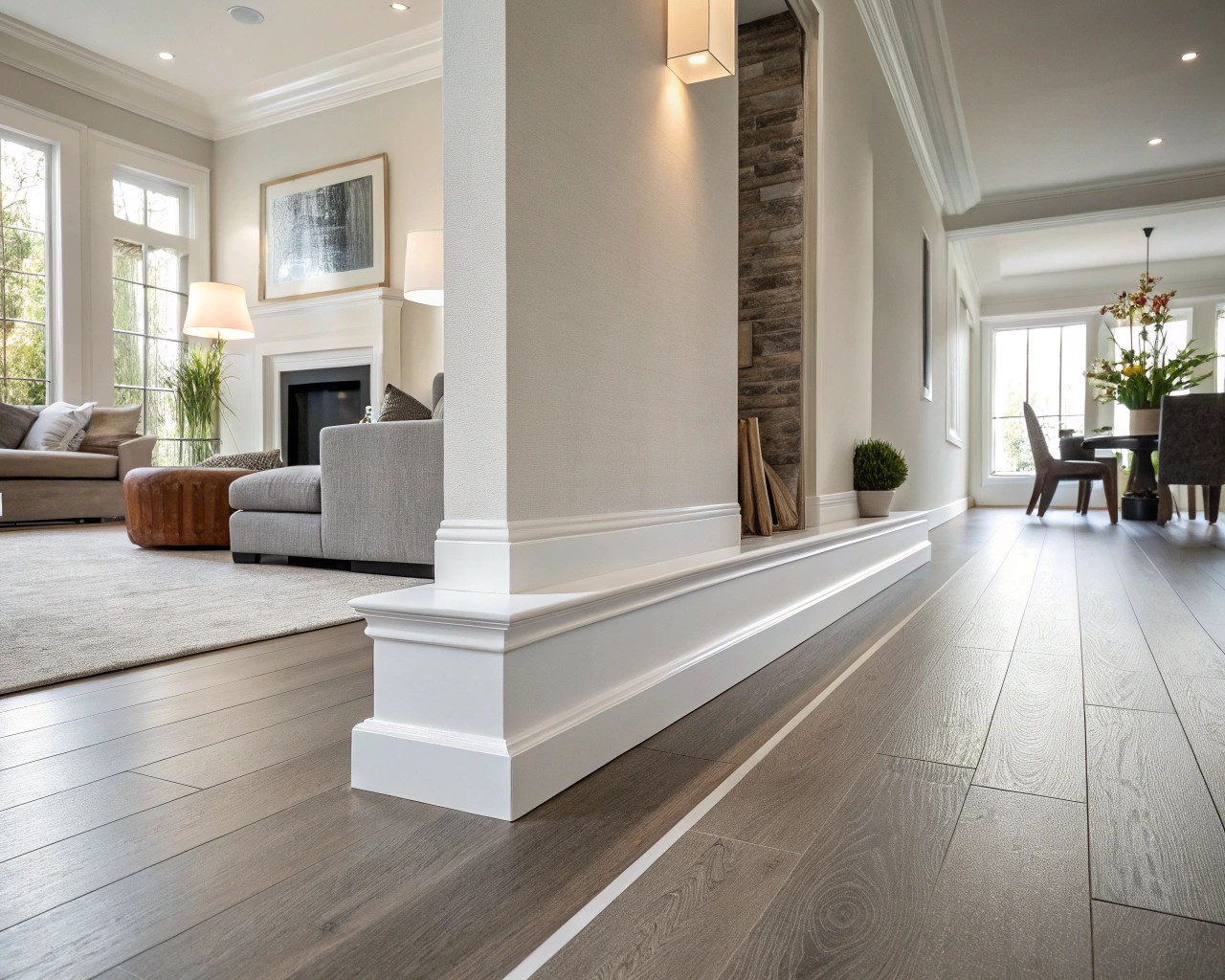
Modern baseboards are characterized by clean lines and simplicity. Unlike traditional baseboards with intricate details, modern designs focus on minimalism and subtlety. They typically feature straight or slightly rounded profiles with heights ranging from 4 to 8 inches.
The most popular modern baseboard styles include:
- Flat baseboards: Simple, unadorned boards that provide a clean, contemporary look
- Rectangular baseboards: Clean-lined silhouettes with subtle stepped profiles or thin groove details
- Recessed baseboards: Installed flush with the wall with a small “reveal” gap, creating an extremely sleek look
Modern flat baseboards work exceptionally well in homes that lean toward contemporary design without going completely minimalist. They add sophistication without appearing fussy, particularly when installed at heights of 6 inches or more.
Traditional and Decorative Options
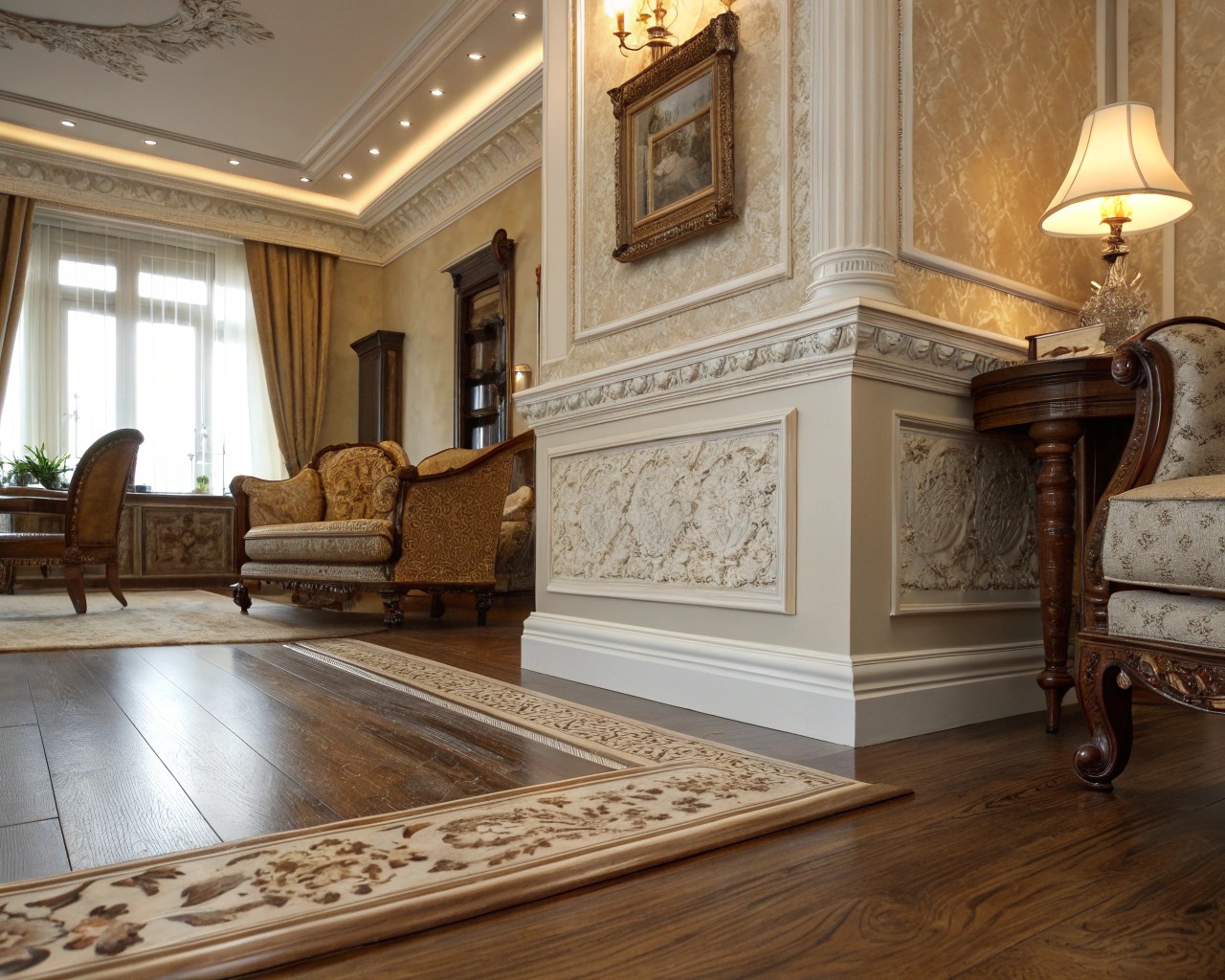
For homes with traditional architecture or transitional styles, decorative baseboards offer timeless appeal:
- Sculpted profiles: Featuring curves, ogee (S-shaped) details, and other traditional elements
- Built-up baseboards: Combining multiple pieces to create substantial, layered looks
- Architectural baseboards: Including ornate details that complement crown molding and other trim elements
These styles add character to spaces where architectural details like door profiles and window trim are key features that make a room feel rich and welcoming.
Specialty Approaches
Innovation in interior design has introduced several unique baseboard approaches:
- Flush baseboards: Professionally installed to be perfectly aligned with walls, creating a sophisticated, barely-there detail
- Metal baseboards: Using stainless steel or other metals for an industrial, contemporary look
- Reveal baseboards: Creating a small shadow line that makes walls appear to float slightly above the floor
- Ultra-slim baseboards: Just enough to cap the perimeter of the floor while leaving walls intentionally underdressed for a zen-like atmosphere
Material Matters: Choosing the Right Foundation
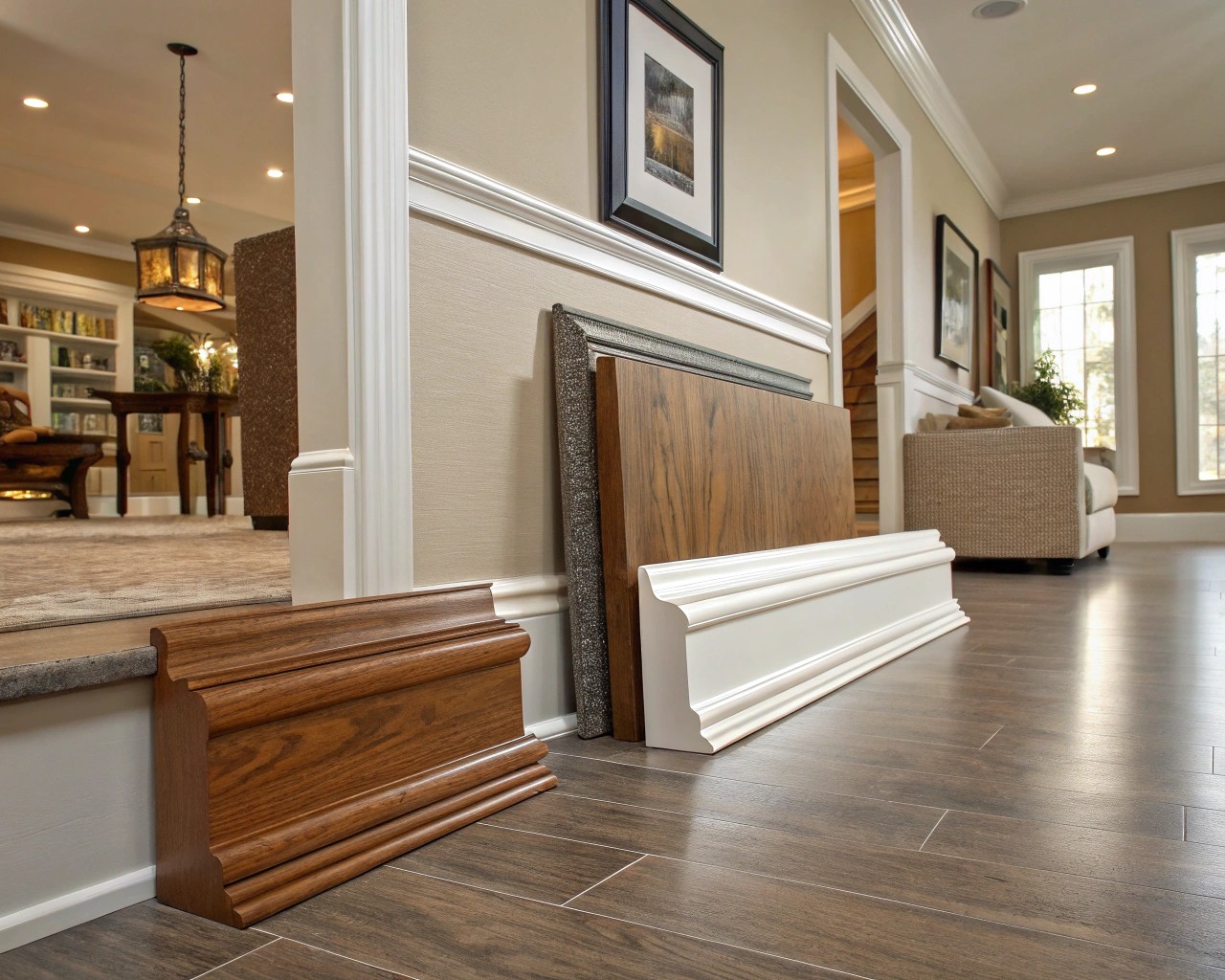
The material you select for your baseboards impacts both aesthetics and performance.
| Material | Pros | Cons | Best Applications |
|---|---|---|---|
| Solid Wood | Durable, classic appearance, can be refinished | More expensive, susceptible to moisture | Traditional homes, main living areas |
| MDF | Affordable, smooth surface, takes paint well | Less moisture-resistant, can’t be refinished | Most residential spaces, painted applications |
| PVC | Waterproof, consistent, low maintenance | Limited finishing options, less traditional | Bathrooms, basements, kitchens |
| Metal | Modern appearance, extremely durable | More expensive, specialized installation | Contemporary spaces, commercial applications |
| Stone/Tile | Waterproof, distinctive, durable | Expensive, limited styles | Bathrooms, wet areas, Mediterranean styles |
MDF (Medium-Density Fiberboard) is a popular choice for modern baseboards due to its smooth surface and ease of painting. It’s also an affordable option that works well in most homes.
Wood veneer baseboards offer the warmth of natural wood with a modern twist, available in various finishes that create a seamless look when paired with wooden floors or furniture.
Selecting Baseboards That Complement Your Space
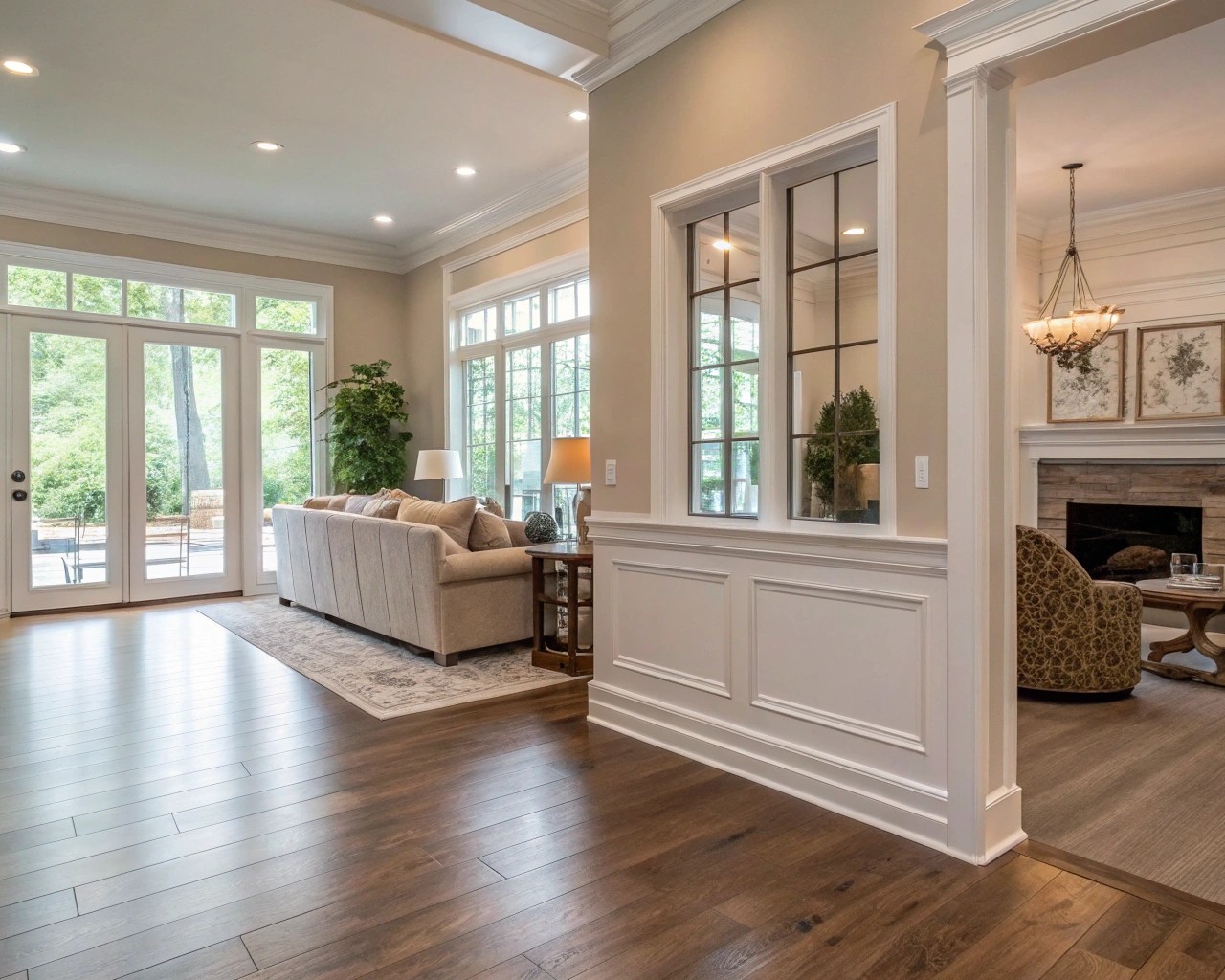
The right baseboard choice depends on several factors including architectural style, ceiling height, and practical considerations.
Matching Style to Architecture
When selecting baseboards, harmony with your home’s architecture should be the primary consideration:
- Modern/Contemporary: Flat or rectangular profiles with clean lines and minimal ornamentation
- Traditional: Sculpted profiles with curves or decorative elements
- Transitional: Simplified traditional profiles or rectangular designs with subtle detailing
- Minimalist: Recessed, flush, or ultra-slim options that nearly disappear
Proportion and Scale
Baseboard height should be proportionate to ceiling height and room size:
- For 8-foot ceilings: 3-5 inch baseboards
- For 9-10 foot ceilings: 5-7 inch baseboards
- For taller ceilings: 7+ inch baseboards
You can create the appearance of taller baseboards by using built-up designs that combine a main baseboard with additional trim elements, or by employing a clever paint trick: painting the wall a few inches above a standard baseboard in the same color.
Practical Considerations for Different Rooms
Different spaces have unique requirements:
- Living areas: Standard wood or MDF baseboards work well
- Kitchens/Bathrooms: Consider moisture-resistant options like PVC or properly sealed MDF
- High-traffic areas: Durable materials like solid wood or metal will better withstand impacts
- Basements: Moisture-resistant materials are essential to prevent damage
The Power of Color: Baseboard Finishing Strategies
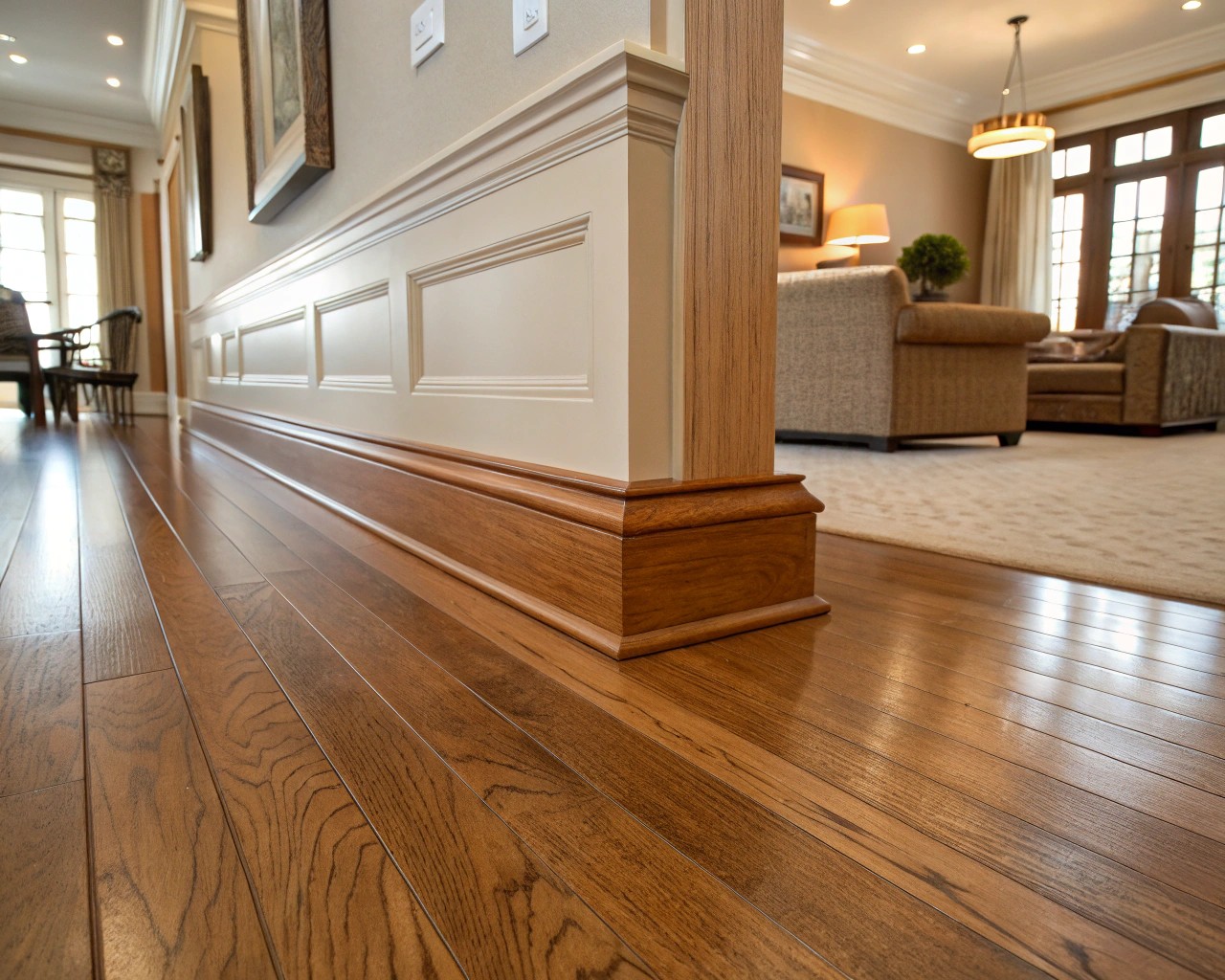
The finish you choose for your baseboards can dramatically impact your space’s overall feel.
Traditional Approaches
White remains the most popular choice for baseboards, creating a clean, classic look that complements most design styles. This approach:
- Provides visual definition between walls and floors
- Creates a sense of architectural integrity
- Matches other white trim elements for cohesion
- Brightens spaces and creates visual lift
Creative Alternatives
For more distinctive approaches, consider:
- Painting baseboards the same color as walls: Creates a seamless, contemporary look that can make spaces feel larger and more cohesive
- Contrasting with wall color: Makes baseboards a deliberate design element rather than a background feature
- Bold accent colors: In contemporary spaces, colorful baseboards can add unexpected visual interest
- Natural wood finishes: Stained baseboards bring warmth and character, especially beautiful with matching hardwood floors
For instance, when dealing with a richly patterned wallpaper, choosing deep white baseboards can provide a needed visual break, preventing competition with the pattern. This strategy allows the baseboards to create breathing space, which actually enhances the wallpaper’s overall impact.
Installation Essentials: Creating Flawless Baseboards
Professional installation makes a significant difference in your baseboards’ appearance and longevity.
Preparation Steps
Before installing baseboards:
- Remove existing baseboards carefully if present
- Ensure walls and floors are clean and properly finished
- Measure walls precisely, accounting for corners and obstacles
- Pre-paint or finish baseboards before installation when possible
- Gather proper tools: miter saw, coping saw, nail gun, caulk
Installation Process
For the cleanest results:
- Cut baseboards with 45-degree miters for outside corners
- Use coping techniques for inside corners for seamless joints
- Attach baseboards to wall studs using finishing nails
- Countersink all nails below the surface
- Fill nail holes with wood filler and sand smooth
- Caulk gaps along top edge and corners
- Touch up paint or finish as needed
Special Installation Types
Some contemporary baseboard designs require specialized techniques:
- Recessed baseboards must be planned during construction phases
- Flush baseboards require coordination with drywall installation
- Metal baseboards often need specific fastening methods
Maintenance: Preserving Baseboard Beauty
Proper maintenance keeps baseboards looking fresh and extends their lifespan.
Essential Cleaning Supplies
To effectively clean baseboards, gather these supplies:
- Vacuum cleaner with brush attachment
- Microfiber cloths
- Bucket with warm water
- Mild dish soap
- Soft-bristle brush or sponge
- Spray bottle
- Magic eraser for stubborn marks
- Old toothbrush for crevices and details
Regular Maintenance Schedule
Follow this routine to keep baseboards looking their best:
- Weekly: Dust baseboards with vacuum brush attachment or microfiber cloth
- Monthly: Wipe down with slightly damp cloth and mild soap solution
- Quarterly: Deep clean with appropriate cleaners for your baseboard material
- Annually: Inspect for damage, touch up paint, and recaulk as needed
Cleaning Process
For effective cleaning:
- Start by dusting baseboards thoroughly with a dry cloth or vacuum attachment
- Check for damage like cracks or chips that need repair
- Lightly sand any rough spots with fine-grit sandpaper
- Apply a mild cleaning solution with a damp cloth
- Use a soft brush for textured baseboards
- Tackle stubborn scuffs with a magic eraser
- Dry thoroughly to prevent moisture damage
Real-World Baseboard Transformations
These case studies showcase how baseboard choices transform spaces.
Modern Makeover: The Henderson Project
When the Hendersons purchased their 1990s colonial, the 3-inch curved baseboards felt dated and diminutive compared to the 9-foot ceilings. We replaced them with 5-inch flat baseboards throughout, painting them the same soft white as the walls. This simple change dramatically modernized the space while maintaining clean lines consistent with their contemporary furniture. The taller baseboards also created better proportion with the ceiling height, making the rooms feel more balanced and intentionally designed.
Victorian Revival: The Westfield Restoration
For a historic Victorian home renovation, authenticity was paramount. We sourced 7-inch decorative baseboards with detailed profiles that complemented the original crown molding. Rather than the expected white, we finished them in a rich mahogany stain that matched the restored staircase and hardwood floors. The result honored the home’s architectural heritage while creating visual warmth that anchored the high-ceilinged rooms.
Coastal Contemporary: The Oceanside Project
In a modern beach house with concrete floors, traditional baseboards would have felt incongruous. The solution was sleek metal baseboards throughout the main living areas, creating a sophisticated industrial element that perfectly bridged the concrete floors and textured walls. In wet areas like bathrooms, we continued the floor tile up as a baseboard, creating a seamless, waterproof transition that maintained the minimalist aesthetic.
Emerging Trends in Baseboard Design
The world of baseboards continues to evolve with new approaches emerging regularly.
Integrated Technology
Forward-thinking designs now incorporate:
- LED lighting strips within baseboard reveals
- Heating elements integrated into baseboards
- Cable management systems concealed within baseboards
Sustainability Focus
Eco-conscious baseboard options include:
- Reclaimed wood baseboards
- Bamboo and other rapidly renewable materials
- Low-VOC finishes and adhesives
- Recycled plastic composites
Design Directions
Watch for these developing trends:
- Ultra-minimal shadow line details
- Contrasting material inlays
- Oversized proportions (10+ inches)
- Three-dimensional textured profiles
Conclusion: The Foundation of Beautiful Spaces
Baseboards may be the last element installed in a room, but they should never be an afterthought in your design process. These architectural details have the remarkable power to elevate spaces, define style, and create visual harmony.
Experience working with clients shows that these seemingly “small” details often make the most significant difference between ordinary and extraordinary spaces. The right baseboards don’t just finish a room—they establish its foundation, bridging floors and walls while speaking to the architectural language of the entire home.
Whether you’re renovating a historic property or creating a contemporary sanctuary, thoughtful baseboard selection ensures your space reads as intentional, cohesive, and complete. In the pursuit of beautiful interiors, sometimes it truly is all about that base.

